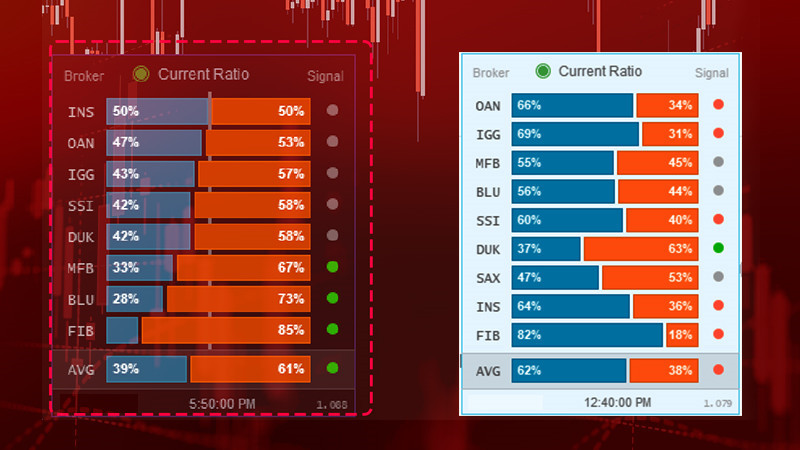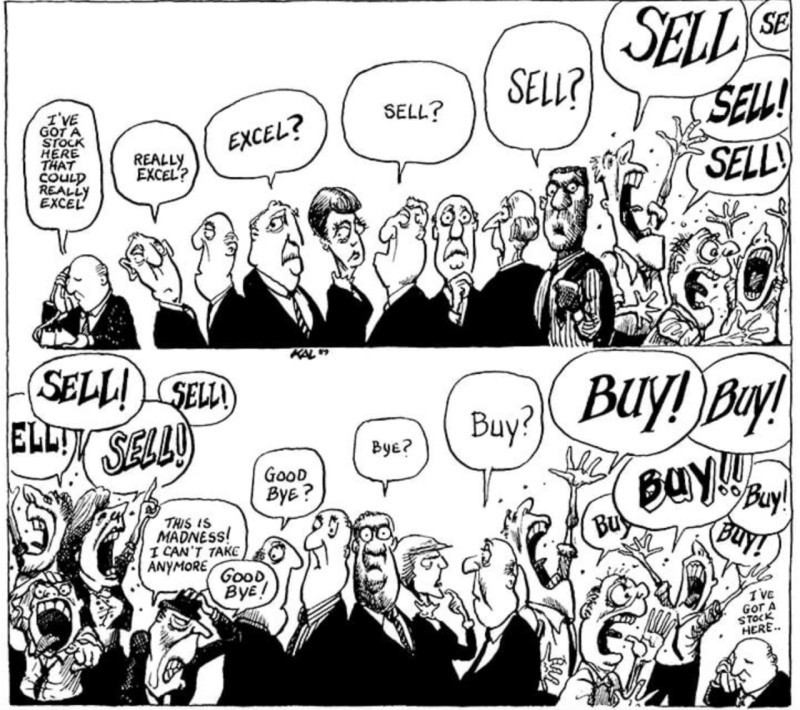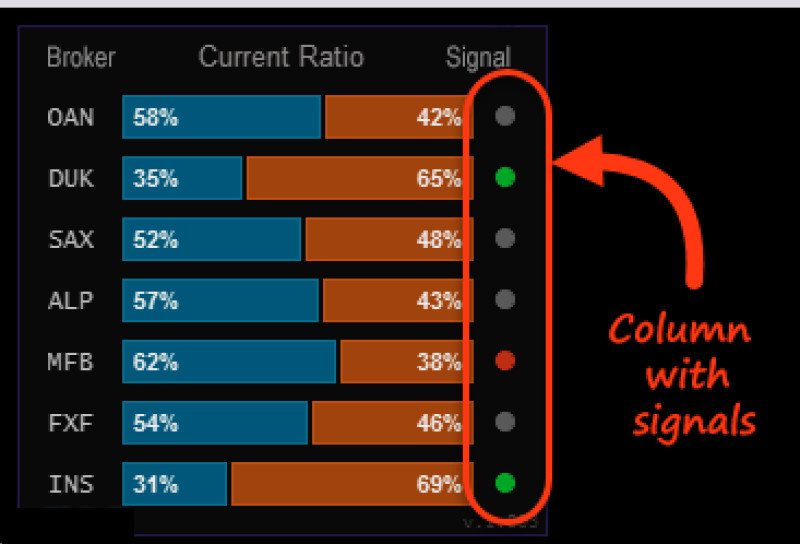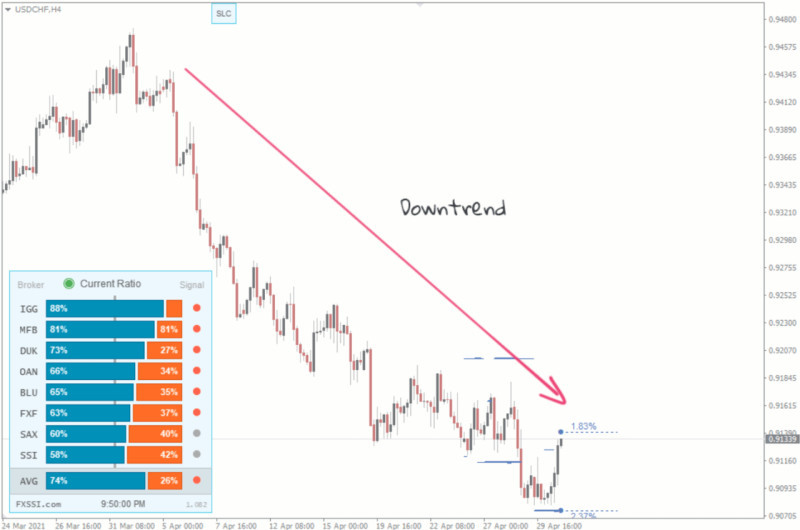
Everyone, at least once in their life, has made decisions driven by emotions. Such actions often lead to regret, and for traders, they can be catastrophic.
This is why successful trading requires controlling emotions and rational thinking when making decisions. Traders should also make these decisions independently, rather than being swayed by the crowd.
An important tool in assessing market sentiments and understanding the majority's direction is discussed in this article.
Psychological Factors in Trading
Underestimating the influence of emotions and psychological factors in trading is a grave mistake. No matter how skilled or experienced, a trader is still human, prone to various feelings and emotions.
However, in trading, it is crucial to manage these emotions, as failure to do so can severely damage one's trading performance.

Fear and greed are the two emotions that most significantly affect traders. Let's delve into how they influence trading and how to combat them.
Fear manifests in several aspects: fear of opening and closing positions, losing deposits, missing opportunities, etc. For instance, a trader might be afraid to make real money trades after moving from a demo to a live account.
Similarly, inexperienced traders often rush to close trades for fear of losing existing profits, even though they could earn more.
On the flip side, greed leads traders to hold positions longer than necessary to maximize gains, often unjustifiably increasing risk.
Apart from these emotions, other psychological factors also hinder successful trading. These include overconfidence, anger, impatience, bias, etc.
For example, traders might become overly confident after a series of successful trades, mistakenly believing they have found the perfect strategy. This often leads to false conclusions.
Anger and impatience prevent making well-considered decisions, leading to impulsive actions that may later be regretted.
Crowd Psychology in Trading
Another common issue, especially among novice traders, is the tendency to follow the crowd. They often believe that the majority knows best, thus it seems sensible to mimic their actions.
Beginners tend to assume that the majority consists of seasoned professionals making consistently profitable trades. However, in reality, this is often not the case, and it's frequently the majority that is mistaken.

In fact, professional traders represent only a small percentage of all traders. Yet, it is these professionals who more significantly influence market situations and extract benefits for themselves. Many individual traders do not engage in special preparation before trading, fail to conduct thorough analysis, and make decisions influenced by emotions. This is precisely why one should not rely on or follow the majority's opinion.
So, how can one counteract the crowd? There are several approaches. The most reliable is to ignore the majority's behavior altogether and adhere strictly to one's trading strategy.
Having and following a personal trading strategy offers many advantages to a trader, which will be discussed later. The main benefit is the elimination of the emotional factor in trading.
Alternatively, one can deliberately go against the crowd, trading in opposition to the mass direction of traders. This means selling when everyone is buying and buying when they are selling.
Another approach is to enter the market ahead of the crowd, anticipating the majority of other traders to maximize potential profits. The second option is to be 'behind the crowd,' playing on a pullback rather than a sharp spike in value.
One should only open trades simultaneously with the crowd when a market trend is just emerging. But how can one discern the current direction of the majority's trades? This will be discussed in the following sections.
MT4 Open Positions Indicator: Current Ratio
To identify and counteract crowd sentiment, a special tool has been developed. We will discuss what the MT4 open positions indicator is called and how to use it in this section.
The tool is named Current Ratio. It displays the real-time ratio between buy and sell transactions for assets. This indicator gathers its data from several services.
The Current Ratio indicator uses data from 10 sources and can display information for 12 major currency pairs simultaneously. It only considers currently open positions, excluding closed trades.
The analysis results are shown in a table that can be placed directly on the chart, allowing continuous market monitoring. This makes it versatile, regardless of the trading strategy employed by the trader.
Key applications of this instrument include:
- Medium and long-term trading;
- Determining the direction of trades;
- Assessing the current trend's status.
Trade volumes are displayed in percentages and divided into columns. The first column shows the percentage of long positions, and the last column represents short ones. Additionally, there is a color signal system.

The green color indicates a buy signal, while red signifies a sell signal. Hence, a green signal suggests a dominance of sellers in the market, and red indicates buyers. There's also a grey icon, denoting the absence of signals.
Settings of the Indicator
As we have learned from previous sections, the MT4 open positions indicator is called Current Ratio, and it is useful for trading. Let's delve into how to install and configure it.
This indicator is not freely available, but given the valuable information it can provide to a trader, it's worth the purchase. After acquiring and downloading the indicator, it needs to be added to the Libraries folder.

The Current Ratio indicator can be tailored to meet individual needs and preferences. It has a wide range of settings, most of which can remain unchanged. Let's examine the key configurations:
- Brokers: Users can choose to include or exclude certain brokers in the calculations.
- Formula for deriving average values: Here, users define how much weight each broker has in the average value calculation.
- Color scheme and placement of the indicator's table window.
- Receiving sound alerts and email notifications when signals occur.
- Signal Ratio: This crucial parameter triggers the signal to open a position. Users need to set a percentage threshold (between 1% and 49%). The indicator will signal when this threshold is crossed.
For instance, with a setting of 40%, a buy signal triggers when the indicator is within 40%. A sell signal activates at 60% or higher. Trades are not executed between the 40% and 60% range.
Minimize option: This allows the table to be minimized, leaving only one line on the screen showing the main direction of the majority of signals.
Trading Strategy
Trading based on market sentiment and analyzing trader psychology is one method of market analysis, alongside fundamental and technical analysis. Each trader, through their actions, influences the market dynamics, collectively shaping the overall market scenario.
Speaking of trading and the human factor's impact, it's noteworthy that most false breakouts on charts are explained by specific actions of trader groups (like setting stop orders).
As previously mentioned, the Current Ratio indicator is used particularly in "contrarian" trading strategies. This means that when the majority of traders are buying, it might be wise to sell, and vice versa.
If a user employs the tool in chart form, the focus should be on the color of the signal circle. A green circle indicates a buy signal, while a red circle suggests a sell signal.

Notably, following the crowd is not always incorrect. In certain situations, moving with the majority is necessary. The dominance of 'red' signals does not always mean it is time to buy; it could indicate a long-term downward trend.
In addition, there is a supplementary tool called Ratios. This tool displays the ratio of 'bull' and 'bear' positions in the form of a chart, located beneath the main asset chart.
Graphical representations of open trades are generally more user-friendly than numerical data. Chart lines offer clearer visibility of the direction in which the majority of traders are making their trades.
Here, specific thresholds are set: below 40% indicates a dominance of sales, from 40% to 60% is not considered, and above 60% suggests a predominance of buys. Users can customize this range.
Conclusion
Psychological factors play a significant role in trading due to the human tendency to make decisions influenced by emotions and stress. Many traders, especially novices, tend to follow the crowd.
This is often one of the biggest mistakes, as the crowd is rarely right. Each trader should independently analyze market situations and make their own decisions.
However, being aware of the majority's sentiments can also be beneficial. This is where the special indicator, Current Ratio, comes into play. It visually represents the current market situation and the predominance of sellers or buyers.
This tool gathers information from various sources and displays it in a table format, with a separate table for each chart and a corresponding currency pair.
Most traders use this indicator to trade 'against' the crowd. For instance, when the market is dominated by sell trades, they buy, and vice versa.
But it does not always work in this straightforward manner. Sometimes it is viable to move with the flow, sometimes ahead or behind it. More crucially, it is important to adhere to one's trading strategy and principles.
You may also like:
How to install an indicator in MT4
How to add expert advisor in MT4
How to install two MT4 terminals








 Back to articles
Back to articles









